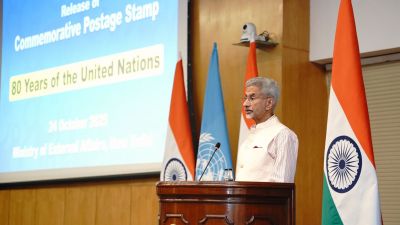Australia employment soars by 71,500,market gives up on rate cut
Australian Bureau of Statistics showed full-time jobs rose 17,800 in February.
Australian employment soared by 71,500 in February,far above any forecast and the biggest increase in over a decade,the most compelling sign yet that low rates and rising asset prices are fuelling an economic pick-up.
The Australian dollar and bond yields jumped on the startlingly strong figures,which were seen as almost ruling out any cut in interest rates before the middle of the year.
“It’s spectacular employment growth,” said Brian Redican,a senior economist at Macquarie.
Thursday’s data from the Australian Bureau of Statistics showed full-time jobs rose 17,800 in February while part-time employment climbed 53,700. The jump helped keep the jobless rate steady at 5.4 percent even though the participation rate rose sharply to 65.3 percent.
A rise in participation is often a sign of an improving economy as people feel encouraged enough to look for work.
“With that kind of employment growth,obviously policy makers would be feeling pretty comfortable with the current policy settings,” added Redican.
Investors seemed to agree and moved quickly to price out much chance of a further cut in the 3 percent cash rate.
Swap rates slashed the amount of easing implied for the year ahead to just 5 basis points. A couple of weeks ago they had 45 basis points pencilled in. Interbank futures <0#YIB:> have the likelihood of an easing at no more than 50-50 and then not until late in the year.
Yields on three-year government debt shot 20 basis points higher Thursday to reach 3.15 percent,the highest since April last year. That was the first time they had been above the 3 percent overnight cash rate since July 2011.
OVER AND OUT
The report comes hot on the heels of other signs of an economic acceleration,with retail sales jumping in January and consumer confidence climbing to a 27-month peak in early March.
That will be music to the ears of Reserve Bank of Australia (RBA) Governor Glenn Stevens,who has held interest rates steady at 3 percent since December in the hope past easings and rising asset prices would percolate through the economy.
House prices have picked up and home building is showing signs of life after a long lull.
Demand for credit still remains somnolent and a high currency is squeezing sectors such as manufacturing. Indeed,the Australian currency leaped three-quarters of a cent to $1.0370 in the wake of the jobs data,adding to the pain.
But investors have sensed enough of an improvement in the underlying economy to toy with the idea that the RBA’s easing cycle,which began back in November 2011,might be over.
“Clearly the labour market is remaining in pretty good shape which suggests the economy over all is travelling nicely as well,” said Michael Blythe,chief economist at Commonwealth Bank.
Figures out last week showed the economy grew by an annual 3.1 percent in the final quarter of last year,beating out almost every other developed nation.
“It adds to the case the Reserve Bank has done enough,and with improving trends like this we think they’ll remain on the sidelines over the rest of 2013,” added Blythe. (Editing by John Mair)





- 01
- 02
- 03
- 04
- 05


























